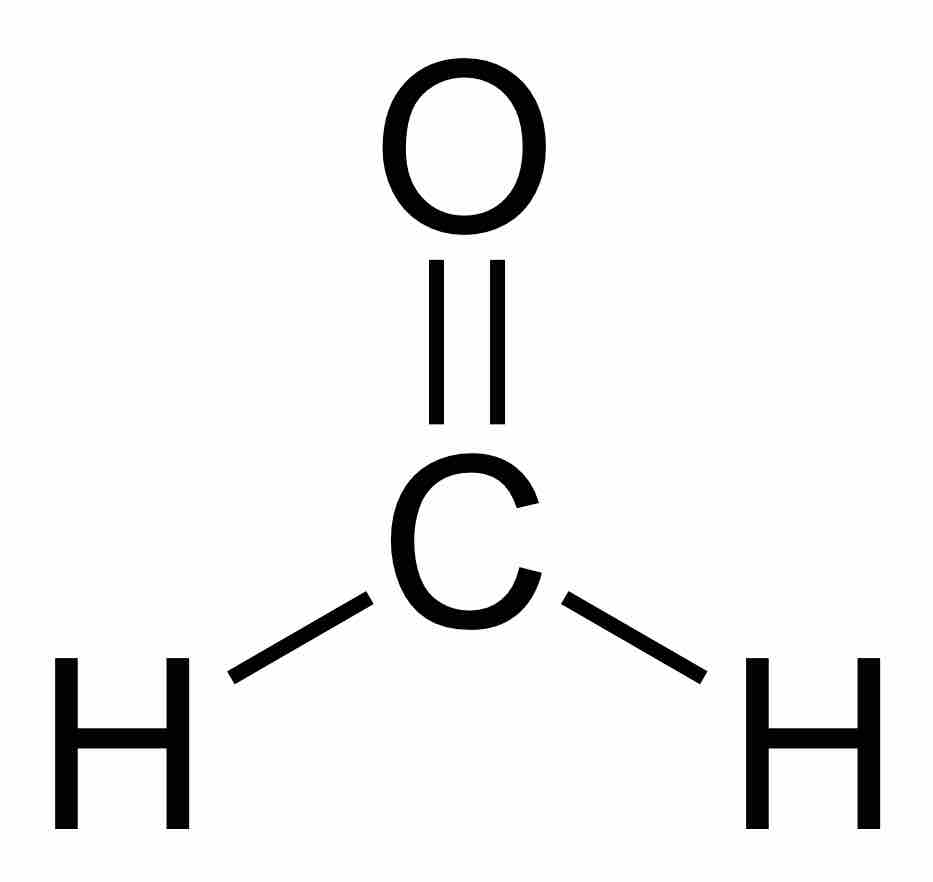Formaldehyde
Formaldehyde is a colorless gas with a characteristic strong odor.

Formaldehyde
This is the chemical structure of formaldehyde.
Formaldehyde is the simplest aldehyde, meaning that the aldehyde group (CHO) is attached to one more carbon. Formaldehyde is used to manufacture building materials and household items. It is also produced during some combustion reactions, is found in exhaust gas, and is a precursor for synthesizing a number of organic compounds, particularly polymers.
Formaldehyde has a range of uses, including as a fabric stiffener in wrinkle-free clothing and as a component of insulation. It is commonly found in pressed wood products like plywood, particleboard, and furniture made from these materials. Formaldehyde is frequently used in adhesives and as a strengthening agent in paper products like facial tissues. It can also be used for its antibacterial and antifungal properties and is frequently employed as an embalming or preserving agent for biological samples.
Health Effects
Formaldehyde can irritate the lungs, eyes, and nose, and exposure causes headaches and nausea; effects are particularly harmful on individuals with asthma, and childhood exposure has been linked to the development of asthma. Formaldehyde can also produce allergic reactions and has been classed as a probable carcinogen by the Environmental Protection Agency. At higher concentrations, it is highly toxic to humans.
Prevention
Good ventilation and restricting the use of household and building materials with high levels of formaldehyde can effectively prevent the formaldehyde's negative health impacts. The Department of Housing and Urban Development has been regulating the levels of formaldehyde in the pressed wood materials since 1985.